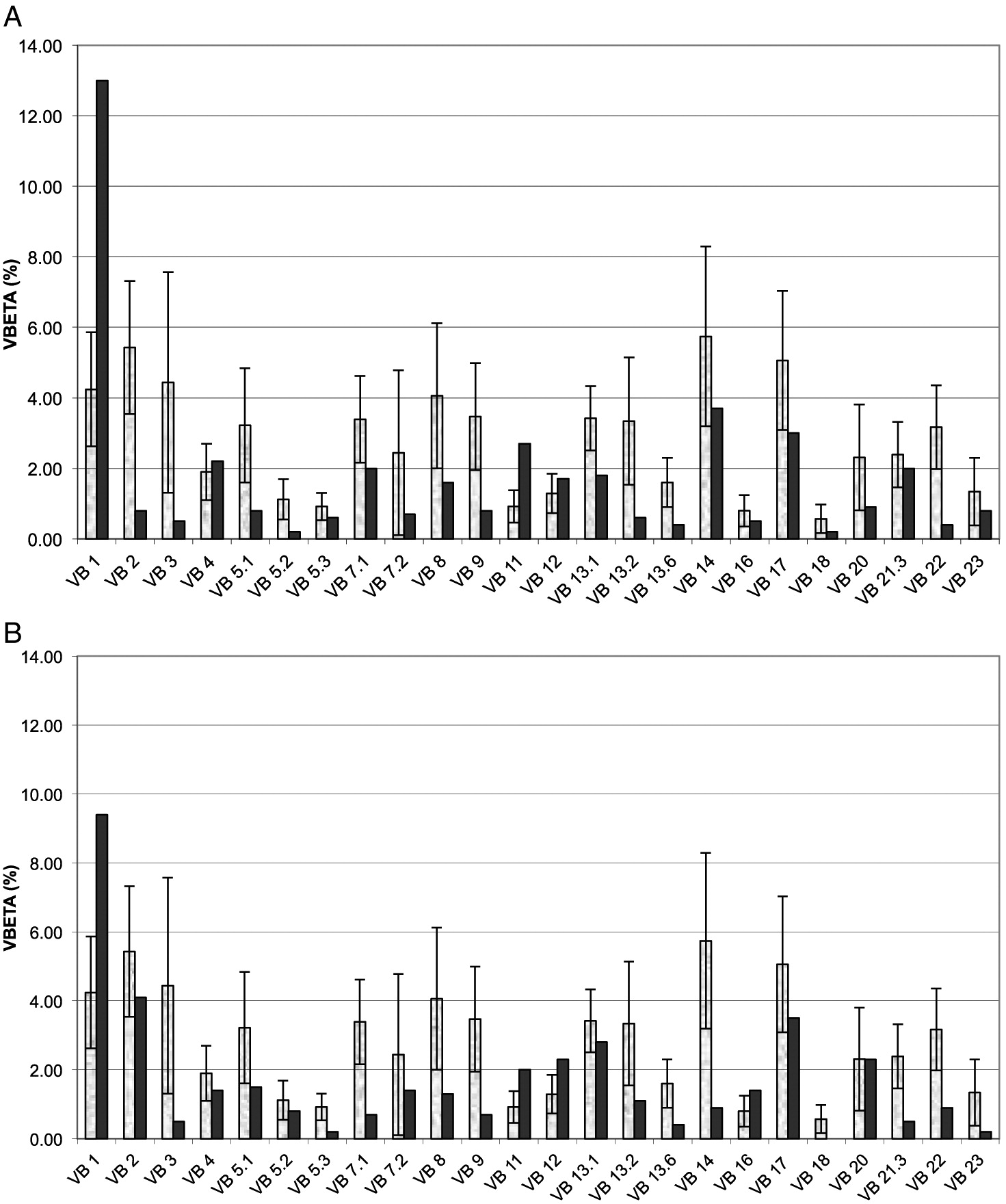Table Of Content

A total of 6 of 16 patients (37%) died, of whom 3 patients had received extensive lymphocyte-depleted grafts from haploidentical donors, 2 patients with matched unrelated, and 1 patient after matched sibling transplantation. The most common mutation in the RMRP gene located on chromosome 9p13.3 is identical in the Old Order Amish population and the Finnish population. Although C1-2 subluxation has been described, we have not, in our series, encountered any cases that have required stabilization nor have we seen any cases of scoliosis that required orthopaedic management. Typically, the patients present with fine, sparse, light-colored, “silky” short hair that breaks easily.
GeneReviews® [Internet].
In 23 out of the 27 chromosomes, the common region expands over 60 kb. In this Amish patient and two Amish CEPH control chromosomes, which were available for genotyping, the haplotypes are the same as the Finnish major haplotype extending over 100 kb region around the RMRP locus. A more extensive collection of Amish samples is needed in order to find out if the A70G substitution accounts for all the frequent CHH cases among Amish or whether several different mutations are also involved in that population. DNA samples from 845 regular blood donors of the Finnish Red Cross Blood Transfusion Service were studied for the Finnish major mutation (A70G). Smaller sets of control samples were studied for the other mutations. A sample was accepted after obtaining a written informed consent and fulfilling the criteria above.
Schimke’s immuno-osseous dysplasia
GeneReviews staff have not independently verified the classification of variants. RMRP-specific laboratory technical considerations.RMRP is an intronless gene encoded by nuclear DNA. Each sib of the proband's parents has a 50% chance of being a carrier of an RMRP pathogenic variant.
Malignancy
This gene encodes the RNA component of the ribonuclease mitochondrial RNA processing complex. This condition is inherited in an autosomal recessive pattern, which means both copies of the gene in each cell have mutations. The parents of an individual with an autosomal recessive condition each carry one copy of the mutated gene, but they typically do not show signs and symptoms of the condition. Affected individuals have hair that is lighter in color than that of other family members because the core of each hair, which contains some of the pigment that contributes the hair's color, is missing.
Table 5.
Most people with cartilage-hair hypoplasia, even those who have milder immune deficiency, experience infections of the respiratory system, ears, and sinuses. In particular, the chicken pox virus (varicella) often causes dangerous infections in people with this disorder. Autoimmune disorders, which occur when the immune system malfunctions and attacks the body's tissues and organs, occur in some people with cartilage-hair hypoplasia. Affected individuals are also at an increased risk of developing cancer, particularly certain skin cancers (basal cell carcinomas), cancer of blood-forming cells (leukemia), and cancer of immune system cells (lymphoma). The most conspicuous single parameter in these estimates is the correspondence of the physical map and recombination probabilities at very short map lengths.

The missing core also makes each strand of hair thinner, causing the hair to have a sparse appearance overall. Unusually light-colored skin (hypopigmentation), malformed nails, and dental abnormalities may also be seen in this disorder. Clinical studies are part of clinical research and play an important role in medical advances, including for rare diseases.
Find Care at Nemours
The entire metaphyseal region is widened and flared at the knee and ankle. Ray and Dorst [66] also reported mild-to-moderate C1 and C2 subluxation. Mäkitie et al. [17], however, reported in 1992 that none of 26 patients had cervical subluxation. Lachman [67] mentioned that several patients showed forward subluxation of C1 and C2 in flexion (lateral C-spine X-rays taken in neutral flexion and extension). Immunization with live vaccines should be carefully considered in those with CHH and evidence of abnormal immunologic function and should be avoided in those with CHH and severe combined immunodeficiency [Rider et al 2009].
PATIENT & FAMILY RESOURCES

Once the RMRP pathogenic variants have been identified in an affected family member, carrier testing for at-risk relatives and molecular genetic prenatal and preimplantation genetic testing for CHH-AD spectrum disorders are possible. Diagnosis of a CHH-AD spectrum disorder is established in a proband with characteristic clinical and radiographic findings. If clinical and radiographic findings are inconclusive, identification of biallelic pathogenic variants in RMRP by molecular genetic testing can confirm the diagnosis and allow for family studies. Symptoms may include short-limbed dwarfism due to skeletal dysplasia, variable level of immunodeficiency, and predisposition to cancer.
Mäkitie et al. reported that the median adult height was 131.1 cm (range 110.7–149.0 cm) for males and 122.5 cm (range 103.7–137.4 cm) for females [18]. The radius and ulna are commonly shorter than the humerus and the femur shorter than the tibia, with the tibia being more severely involved than the fibula. Patients with CHH are classically short at birth and the shortening may increase in the first 2 years of life.
A single case report demonstrated the efficacy of an mTOR inhibitor in the treatment of anemia in an individual with CHH [Del Borrello et al 2022]. The physical characteristics of cartilage hair hypoplasia include a short limbed form of disproportionate short stature with fine, sparse hair. People with cartilage-hair hypoplasia have unusually short limbs and short stature from birth. They typically have malformations in the cartilage near the ends of the long bones in the arms and legs (metaphyseal chondrodysplasia), which then affects development of the bone itself. Most people with cartilage-hair hypoplasia are unusually flexible in some joints, but they may have difficulty extending their elbows fully.
It is caused by mutations in the ribonuclease mitochondrial RNA-processing (RMRP) gene. Extended follow up of persons with CHH revealed that about 11% of the cohort (14/123) followed for 39 years developed malignancies [Taskinen et al 2008]. A Kaplan-Meier estimate gave a probability of a cancer event (excluding basal cell carcinoma) of 41% by age 65 years. Of the 14 who developed malignancies, nine have died; median time to death was three months after malignancy diagnosis.
Take steps toward getting a diagnosis by working with your doctor, finding the right specialists, and coordinating medical care. The Wilcoxon signed ranks test (SPSS 17) was used to compare the number of lymphocyte subpopulations before and after HSCT. T-lymphocyte proliferation was evaluated in vitro after exposure to phytohemagglutinin, Concanavalin A, and pokeweed. After 72 hours, T-lymphocyte proliferative activity was determined by measuring the incorporation of tritiated thymidine into newly synthesized DNA. To find support, talk to anyone on the care team or a hospital social worker about resources that can help you and your child. Mutations in the RMRP (RNA component of mitochondrial RNA-processing endoribonuclease) gene, which maps to the 9p21-p12 locus, are responsible for the disease.
8-Year-Old With Several Rare Genetic Conditions Wins Over TikTok With Her Infectious Joy - CafeMom
8-Year-Old With Several Rare Genetic Conditions Wins Over TikTok With Her Infectious Joy.
Posted: Thu, 10 Feb 2022 08:00:00 GMT [source]
We studied patients from 44 different families, representing nationalities from Europe, North and South America, the Near East, Australia, and China (Table 1). Patients from 13 families were homozygous for the G mutation at nucleotide 70, whereas patients from 15 families were heterozygous for this mutation and represented one of the numerous rare mutations in the pairing allele (Table 1). Patients from five of these families were homozygous for their private mutation, suggesting parental consanguinity (Table 1). In addition to the major mutation, the base substitution G at nucleotide 211 was the only mutation found both among the Finnish (one family) and non-Finnish patients (two families). Like the Finnish mutations, most of the rare mutations in the foreign samples were base substitutions in the transcribed region.
The differential diagnosis should include other forms of short-limb dwarfism. The authors wish to express their appreciation to Richard Pauli, M.D., Ph.D., for providing access to non-Amish patients’ information and to the Women’s Board of Akron Children’s Hospital for their research funding support. This study was supported in part by a grant from the Women’s Board of Akron Children’s Hospital. It would appear that the loss of elbow extension, although typically seen, is most likely related to radial head subluxation or dislocation [27]. This is probably the best explanation, inasmuch as the other joints generally demonstrate increased laxity.
Patients from 13 families are homozygous, whereas patients from 15 families are heterozygous for the A70G substitution representing nationalities from Europe, North and South America, the Near East, and Australia. The ethnic background of the patients from America and Australia, in particular, was often European and mixed. In all non-Finnish CHH families, the major mutation segregates with the same major haplotype as in the Finnish families.
Although typically there is lack of elbow extension, we have not encountered a single patient who had any issues of consequence with that loss of motion. It is interesting that over two-thirds of the patients in McKusick’s study derive ancestry from one John Miller who was married to Catherine Hochstetler. Over 70 % of the patients trace their ancestry to Jacob Hochstetler, a relative of Catherine. Eighty percent of parents of the 50 affected patients studied by McKusick were descended from either Jacob or Catherine Hochstetler, who immigrated to the United States in the mid-1700s.


No comments:
Post a Comment